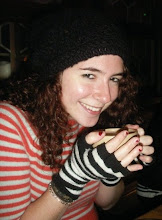Walking south on Allen Street, I noticed that park benches and greenery are starting to pop up on the median of the two-way street. According to a podcast tour I took of the LES a few months ago for my NYU Beat Reporting Downtown class, Allen Street used to have another row of tenement buildings right down the center. It's hard to imagine squeezing in an entire block of buildings, even though this street is technically a wide boulevard. But now, instead of smelly, dirty, unsafe apartments, the median on Allen Street is just another place to sit and drink your shade-grown coffee.

In fact, the dilapidated tenements of the 19th century are now swanky high-priced apartments, or historical sites. The devastation and poverty that plagued this area 100 years ago seems to have disappeared completely. There's even the Tenement Museum, for the majority of us who can't imagine the LES as the former home of the worst slums on earth.


But is this LES poverty really gone? If you walk east, and I mean so east that you almost hit the river on Grand Street, you see a New York that feels forgotten. It is not in the guidebooks, retail stores are few and far between, and I saw street names that I didn't recognize, far beyond Orchard, Norfolk, and Clinton. The housing projects on the East River rise to staggering heights, but their poverty can seem as low as that of the old Lower East Side, the filth and despair that used to pervade the wealthy streets of today.

Down here, far east, streets are named after important Jewish people. There's a Rheba Liebowitz Square, and an Abraham Kazan Street. But most of the Jewish families have left, replaced by low-income Hispanic, black, and Asian families. In this area below Houston Street and east of Columbia, 38-49 percent of families are below the poverty line, with the median income as low as $11,963, according to the census profile of the district in 2000.
Maybe the dirty windows and ancient air conditioning units of the housing projects down here cannot be rightfully compared to the tenements of the past, but walking through this neighborhood, then circling back on Orchard towards home amid the fancy boutiques and gourmet food stores, makes it hard to ignore the "history repeating itself" feeling. Many people say that the Lower East Side has become completely gentrified, but this Lower East Side, just a few blocks from the river, is completely removed from this renewal.


No comments:
Post a Comment